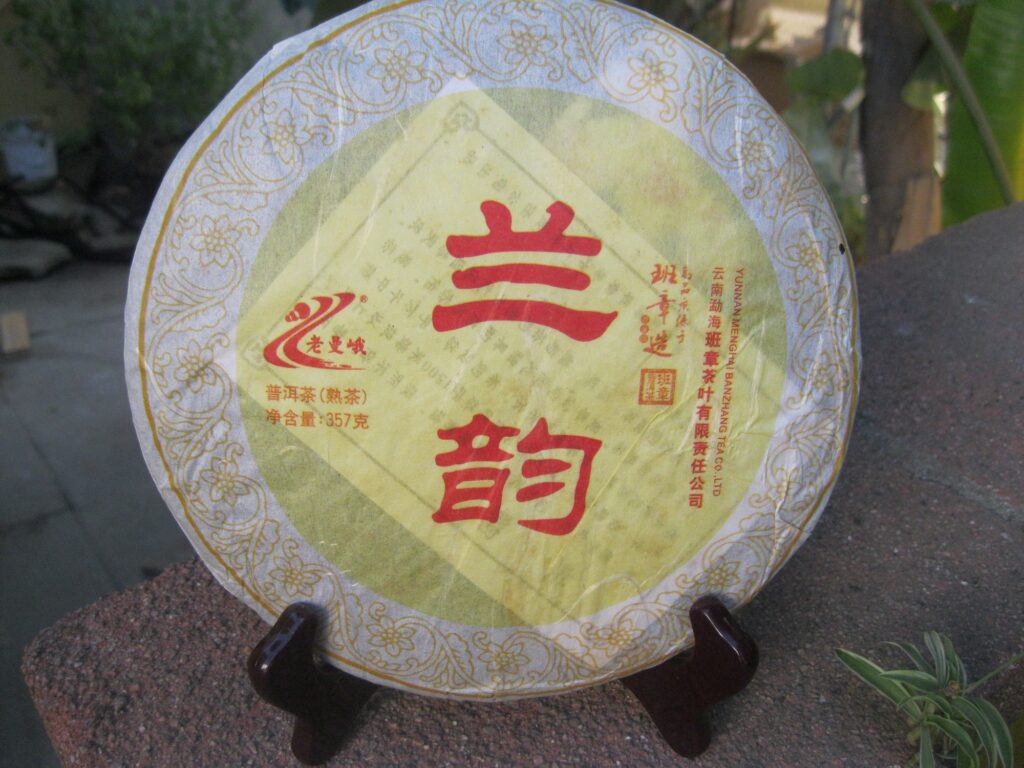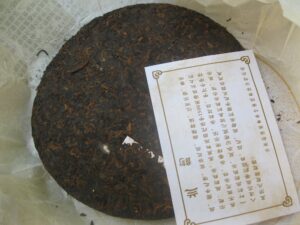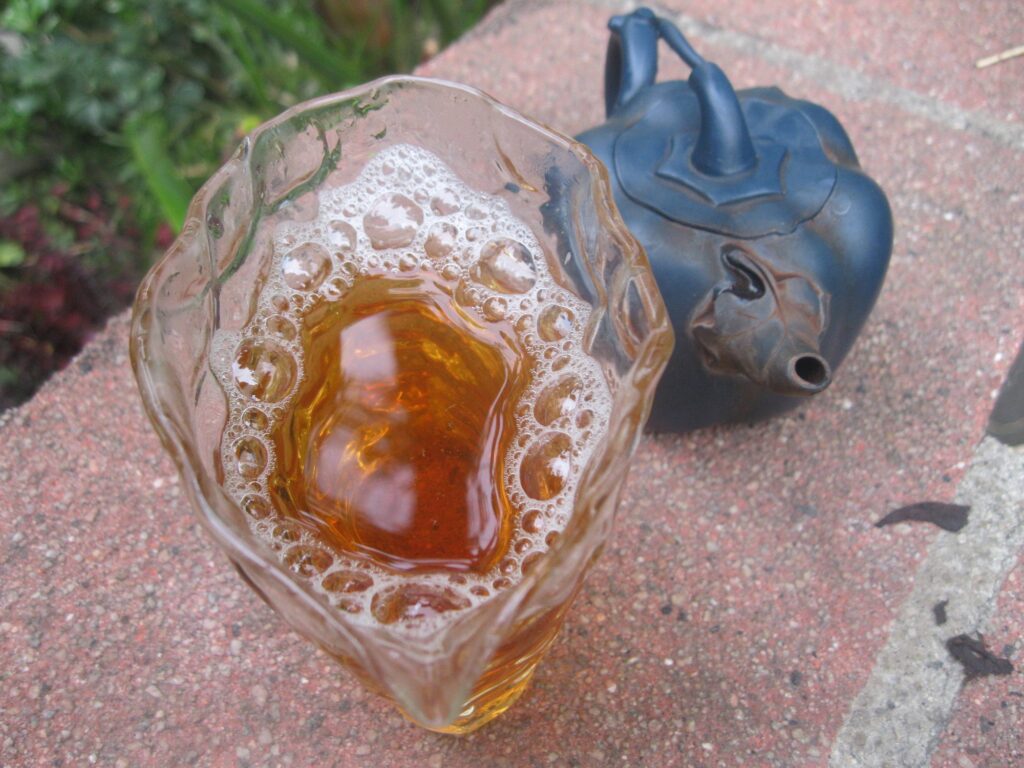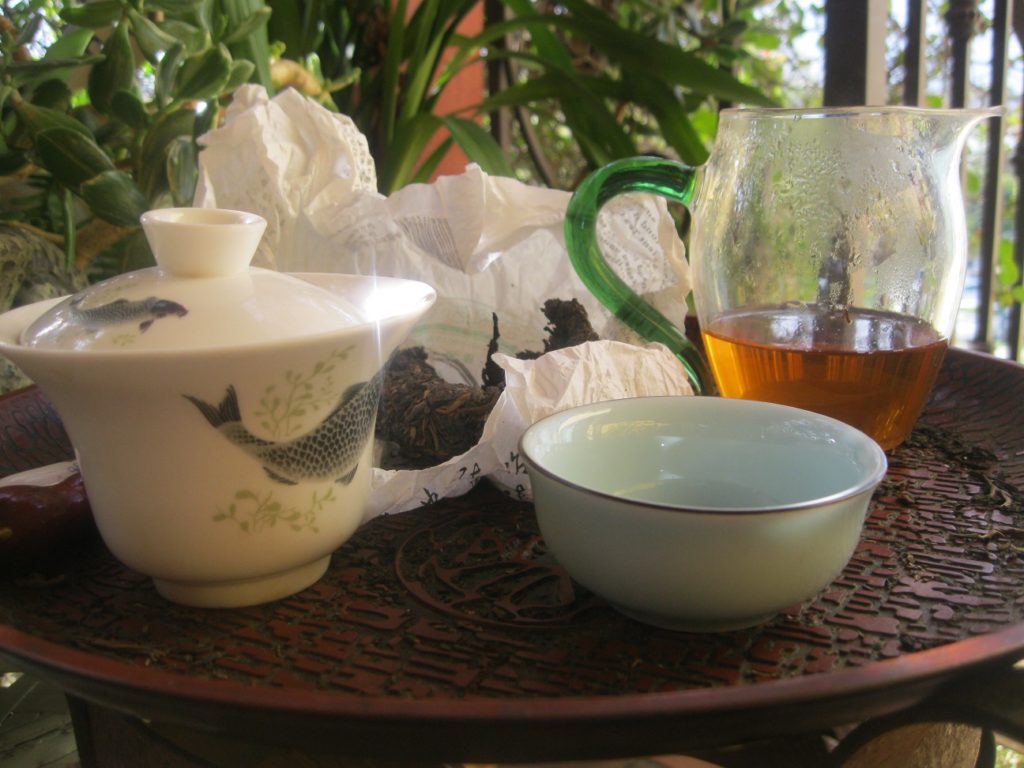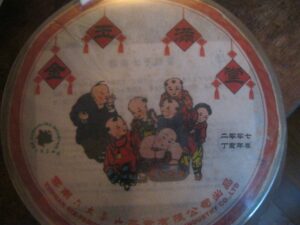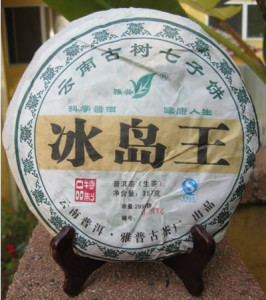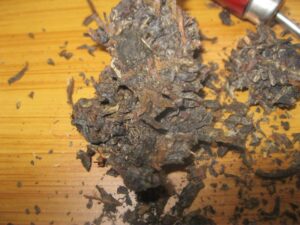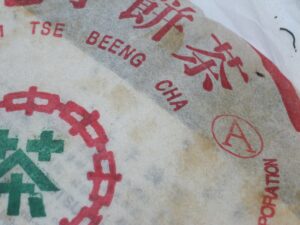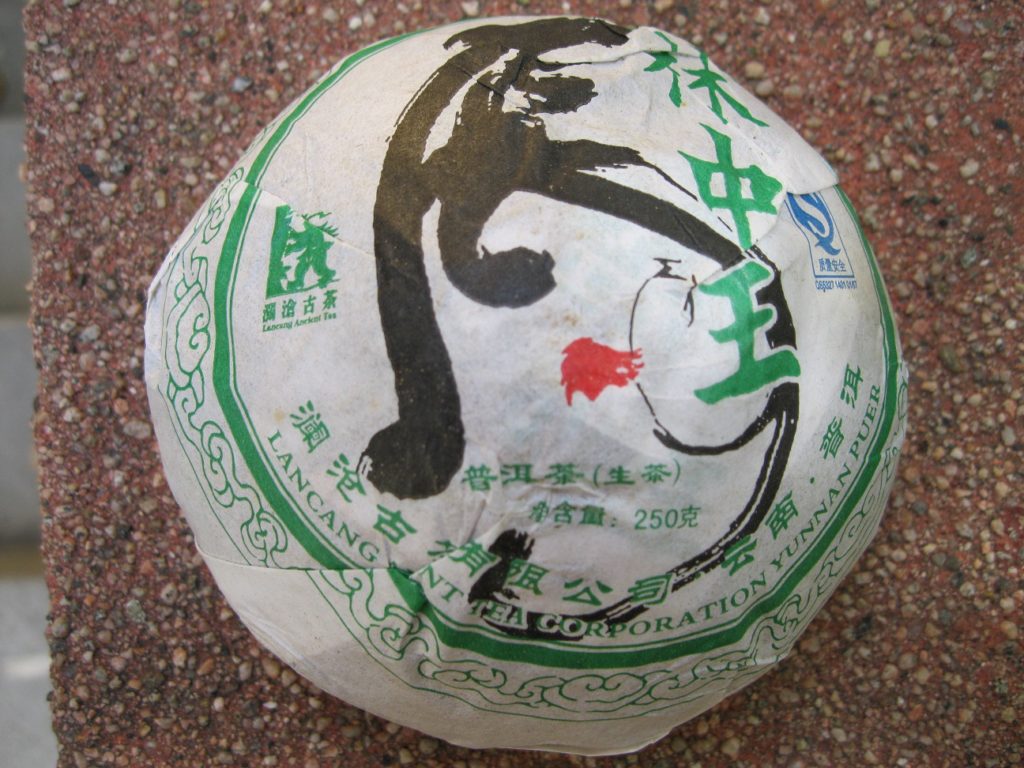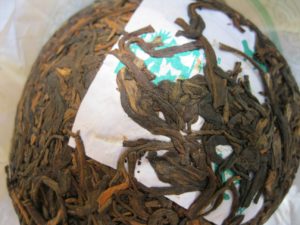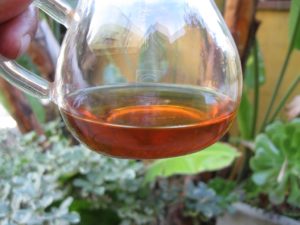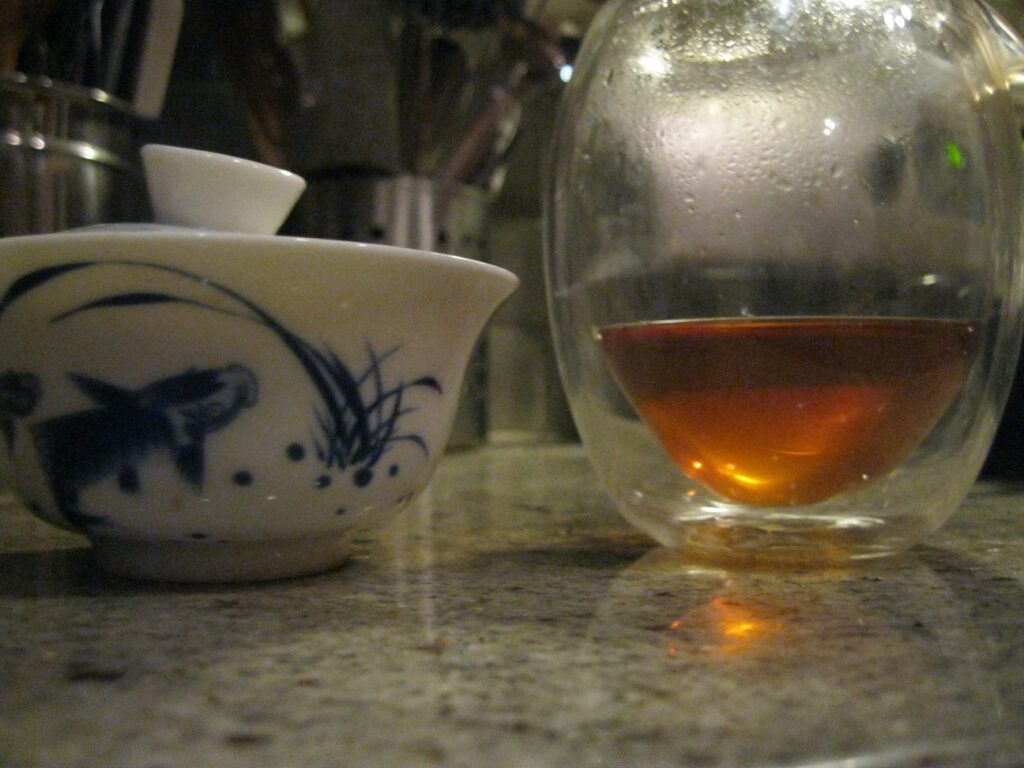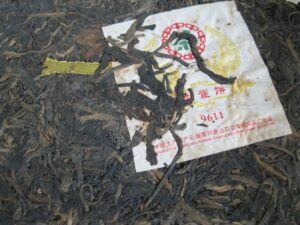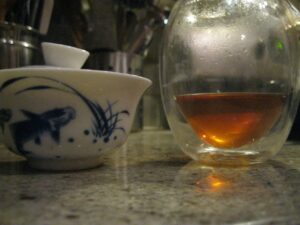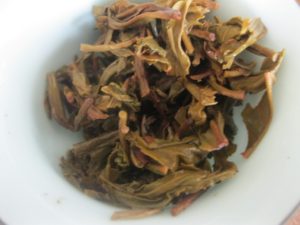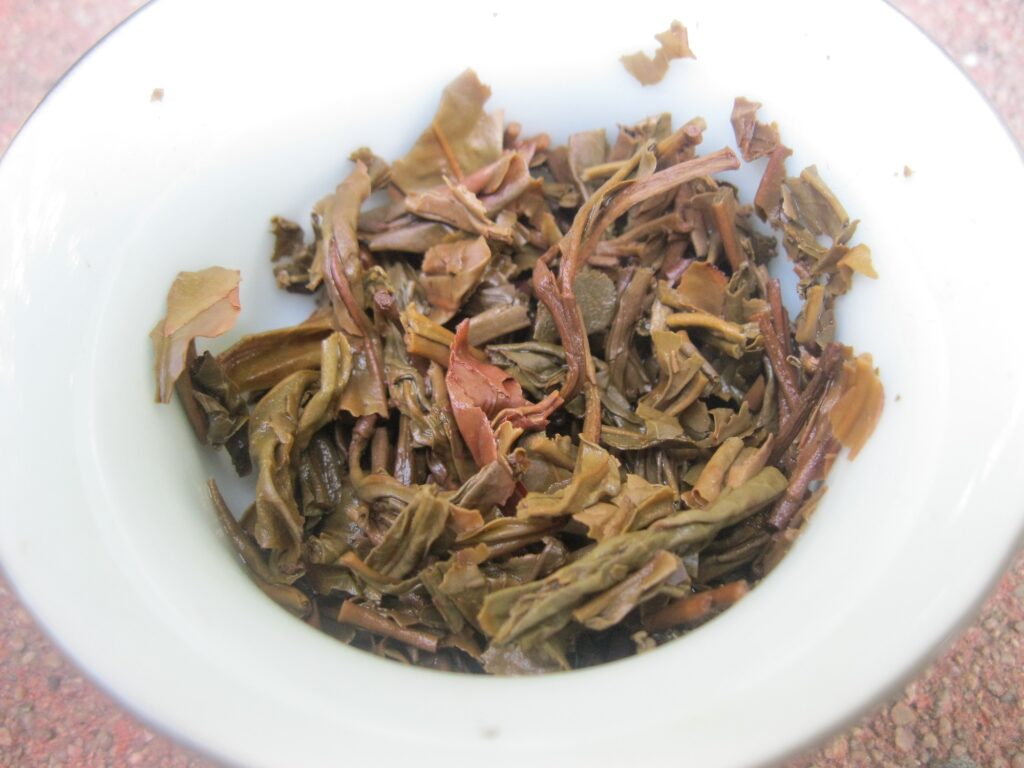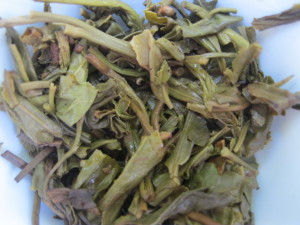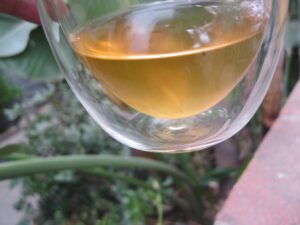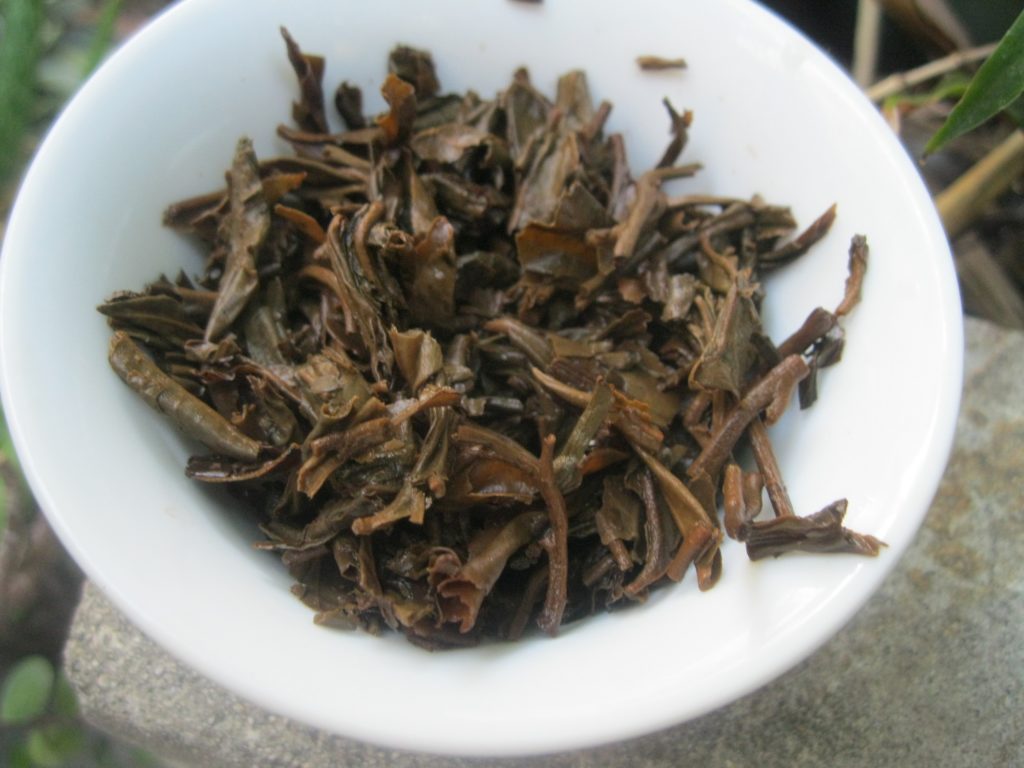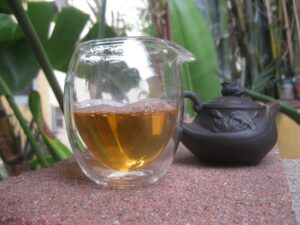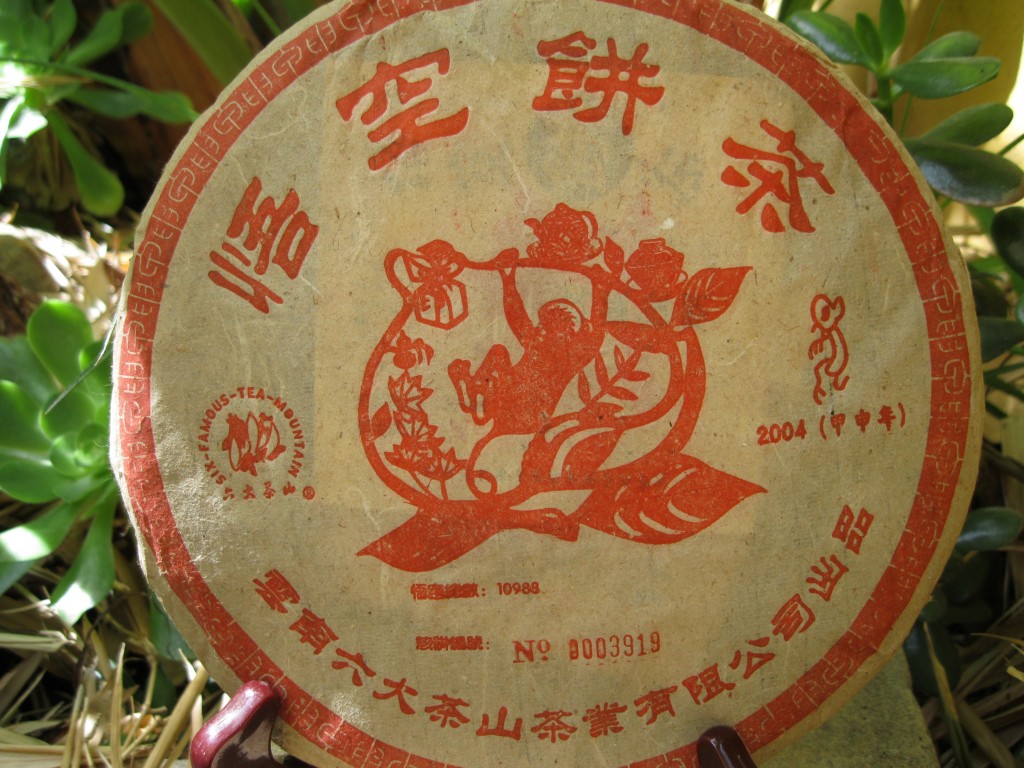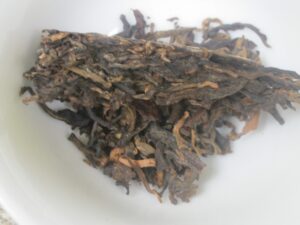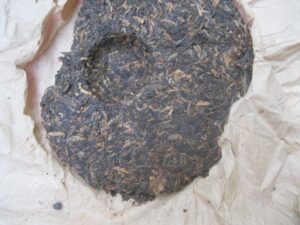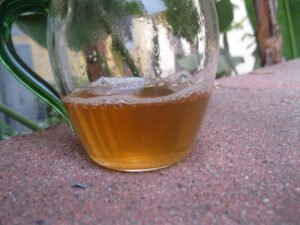Puerh Rating: Orchid Vibe
The Puerh Junky Rating System (PJRS) takes on Orchid Vibe. Offered in 2011, it represents LME’s continued reliable ripe puerh production style. One overriding observation is a sweetness to LME’s ripe house style. The Orchid Vibe is no exception.
After three rounds the total was as follows:
- Aroma 11
- Clarity 10
- Sweetness 13
- Viscosity 15
- Astringency 14
- Huigan 13
- Qi 8
Reflections on Orchid Vibe
Marshmallow and milk chocolate. There’s a very interesting squinch of sour at the back end that makes it cheeky. In later infusions the vanilla marshmallow fades into dark wood terrain that has a faint evocation of rubber bands. There’s also a pervasive blanket of talcum throughout.
Conclusions
Orchid Vibe is a solid everyday drinker for those who like their ripes with a darker edge. It shares attributes with the “55” in terms of sweetness and woodiness, but Orchid Vibe starts out with much more vanilla and marshmallow before expressing wood. “55” is woody throughout with more camphor and tannins. The sour element in this ripe makes it unsuitable for pushing, as previously noted. It nonetheless strikes the Puerh Junky as being exceedingly well executed. The qi on this is a super creeper, 15m later the effects were going stronger than during the session, headiness and started feeling hungry. Puerh Rating: Orchid Vibe
83/105, B

